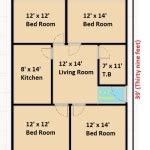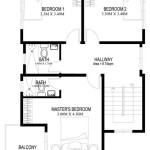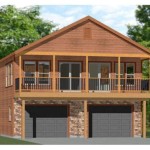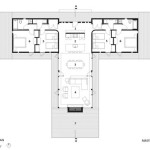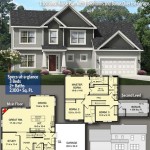Why Are Planes Suddenly Flying Over My House?
Changes in flight patterns can significantly impact the noise levels and visual landscape of previously unaffected residential areas. A sudden increase in air traffic overhead often prompts concern and curiosity among homeowners. Determining the root cause of these changes requires considering a variety of factors influencing air navigation, airport operations, and regulatory decisions.
Understanding the factors leading to increased air traffic over a specific location necessitates exploring several interconnected elements. These elements include alterations in air traffic control procedures, the commissioning of new flight paths, modifications to airport infrastructure, and shifts in weather patterns. Each factor plays a distinct role, sometimes acting independently and other times in concert, shaping the overall flight landscape.
Changes in Air Traffic Control Procedures and Airspace Redesign
Air traffic control (ATC) plays a crucial role in managing the flow of aircraft safely and efficiently through the national airspace system. ATC procedures are regularly reviewed and updated to accommodate increasing air traffic volume, improve safety, and reduce delays. These revisions can sometimes result in aircraft being directed over routes that were previously less frequently used, leading to a perceived surge in flights over certain residential areas.
One significant driver of changes in flight paths is airspace redesign. The Federal Aviation Administration (FAA), in many countries being a similar regulatory agency or organization, periodically undertakes large-scale airspace redesign projects to optimize air traffic flow across entire regions. These projects aim to streamline routes, reduce congestion, and conserve fuel. While the overall goal is to enhance the efficiency of the national airspace system, the implementation of new routes can inadvertently shift traffic patterns and impact communities located along those routes.
New technology also plays a role. The implementation of Performance-Based Navigation (PBN) systems, such as Required Navigation Performance (RNP) and Area Navigation (RNAV), allows aircraft to fly more precise and efficient routes. PBN procedures can concentrate air traffic along specific lines, creating the impression of increased flights over particular locations. While these technologies enhance safety and efficiency, they can also lead to more consistent and predictable flight paths, potentially increasing noise exposure for residents below.
Furthermore, temporary changes in ATC procedures may occur due to unforeseen circumstances, such as runway closures at nearby airports or maintenance work on navigational aids. These temporary adjustments can redirect air traffic over alternative routes, resulting in a temporary but noticeable increase in flights over certain neighborhoods. These reroutings are typically short-lived, but they can nonetheless cause concern and prompt inquiries from affected residents.
Altered Airport Operations and Infrastructure Modifications
Changes in airport operations and infrastructure can also significantly influence flight patterns and noise levels in surrounding communities. Airports are dynamic environments that constantly adapt to evolving circumstances, including increases in passenger traffic, the introduction of new aircraft types, and modifications to runway configurations.
An increase in the number of flights departing from or arriving at a nearby airport can directly translate into more aircraft flying over residential areas. Several factors can contribute to this increase, including economic growth, seasonal travel patterns, and the addition of new flight routes by airlines. To accommodate this growing demand, airports may expand their capacity by adding new runways, taxiways, or terminal facilities. These expansions can alter flight patterns and potentially concentrate air traffic over previously unaffected areas.
Runway configurations and usage patterns can also impact flight paths. Airports typically have multiple runways that can be used for takeoffs and landings, depending on wind conditions and other factors. Changes in prevailing winds can necessitate the use of different runways, shifting flight paths and altering the distribution of air traffic over surrounding communities. For example, if a runway that previously directed aircraft away from a residential area is now used more frequently, residents may experience a noticeable increase in flights overhead.
Moreover, the introduction of new aircraft types with different noise profiles can affect the perceived noise levels in surrounding communities. Some newer aircraft are designed to be quieter than older models, while others may generate more noise, particularly during takeoff and landing. The mix of aircraft operating at an airport can therefore have a significant impact on the overall noise environment. In addition, changes to climb and descent profiles can impact noise. A steeper climb might mitigate noise closer to the airport but spread it further out, or vice versa.
Impact of Weather Patterns and Seasonal Variations
Weather conditions exert a significant influence on flight operations and can contribute to changes in flight patterns over residential areas. Wind, visibility, and precipitation all play a role in determining how aircraft approach and depart from airports.
Wind direction is a primary factor in runway selection. Aircraft typically take off and land into the wind to maximize lift and minimize ground speed. As wind patterns shift, air traffic controllers may need to adjust runway configurations, which can alter flight paths and redistribute air traffic over surrounding communities. For example, if the prevailing wind shifts from a westerly direction to an easterly direction, aircraft may take off and land on different runways, resulting in a shift in flight paths over residential areas located to the east of the airport.
Visibility conditions can also impact flight patterns. During periods of low visibility, such as fog or heavy rain, air traffic controllers may need to increase the spacing between aircraft to maintain safety. This increased spacing can result in longer approach paths and potentially shift flight paths over residential areas that are normally less affected by air traffic. Instrument Landing System (ILS) approaches, which are used during low visibility conditions, often follow specific routes that may concentrate air traffic along certain lines.
Seasonal variations in weather patterns can also contribute to changes in flight paths. During the summer months, for example, increased thunderstorm activity can lead to temporary reroutings of air traffic to avoid hazardous weather conditions. These reroutings can shift traffic over alternative routes, resulting in a temporary but noticeable increase in flights over certain neighborhoods. Similarly, winter storms can impact flight operations and necessitate changes in flight patterns.
In addition to these primary factors, other considerations can contribute to changes in flight patterns over residential areas. These include shifts in airline route networks, changes in population density around airports, and the implementation of noise abatement procedures. Each of these factors can play a role, either individually or in combination, in shaping the overall flight landscape and influencing the noise levels experienced by residents living near airports.
Understanding the complex interplay of these factors is essential for residents seeking to understand why they may be experiencing an increase in air traffic over their homes. Investigating these factors further often requires consulting with local airport authorities, the FAA, or community organizations that specialize in aviation noise issues.
The reasons behind altered flight patterns are multifaceted and often require careful investigation to fully comprehend the changes impacting a specific area. These alterations can involve a complex mix of factors, making it essential to consider all potential influences when seeking explanations for increased air traffic overhead.
Why Are There So Many Planes Flying Over My Neighborhood Does It Seem Like More In The Sky Now Than Ever Before Quora
Why Are The Military Jets Flying Over My House For Hours When Air Show Doesn T Start Until This Weekend Is Not Practice Quora

Big Planes Flying Low Over Houses London Heathrow Plane Spotting
Why Are The Military Jets Flying Over My House For Hours When Air Show Doesn T Start Until This Weekend Is Not Practice Quora
Why Are There So Many Commercial Airliners Flying Over My House Lately I Ve Been Living Here For A Year And This Was Never The Case Quora
I Had About 30 Planes Flying Over My House Today Leaving One Streak Of White Lines Is It Crazy To Have That Many At Once Quora

Eastie Rattled By Low Flying Planes Boston Herald

Why Are Military Helicopters Flying Over My House Fully Explained
Why Are The Military Jets Flying Over My House For Hours When Air Show Doesn T Start Until This Weekend Is Not Practice Quora
Why Are The Military Jets Flying Over My House For Hours When Air Show Doesn T Start Until This Weekend Is Not Practice Quora
Related Posts

